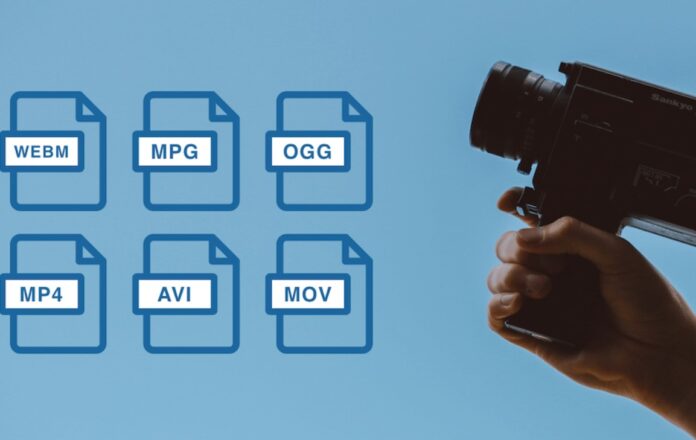What do you imagine if you hear the word MP4? A versatile format? Or a most popular video format. Both are correct. The system began to be developed in 1986 and in 1992 the Moving Pictures Expert Group (MPEG) approved its development and included the format as a standard in the MPEG-1 format under the name MPEG-1 Audio Layer III, later it would be expanded to be incorporated into the version 2.
The simplest explanation happens because the mp3 is compressed by eliminating sound frequencies that are not perceptible by the human ear, so we can compress a CD with an 11: 1 ratio, where a wav file of about 50 MB would occupy less than 5 MB maintaining a medium / high quality with the compression that most programs usually carry by default, 128 kbps at 44,100 Khz.
At that time is when the leap to MPEG-4 is made, year 1998, this new development is more oriented to the distribution via web, videoconference, CD and television broadcasting. Part of the blame for the success of this format is Apple, having included it in the development of QuickTime; the most popular formats that use MPEG-4 are QuickTime mov and avi, generally Divx or Xvid.

And we come to MP4, Apple also influences the popularization of mp4 through the mp4a extension included iTunes and iPod, to differentiate it from MPEG-4. MPEG-4 is video with or without audio while MP4 can be audio, video and audio or only video, in addition to supporting images. Both extensions can be exchanged without problems, renaming an mp4a as mp4 or vice versa.
The MP4 format supports mp3, ACC and Apple Lossless audio, jpg and png images, MPEG, MPEG-4 video, and BT and XMT subtitles. The compression ratio is 16: 1 and they are self-executing files with which an audio file in mp4 comes to occupy more or less the same as an mp3 for having to include the player.
The greatest confusion that can occur to us with both formats is accompanied by the players, when the player for mp4 is developed it is decided to call it the same as the format in an attempt to position itself hierarchically above the mp3. If you see mp3 player and mp4 player you tend to think that the second is technically superior to the first, when this is not really the case, from what we have seen so far we can deduce that they are two different and differentiated things although they have some points in common.

MP4 is one of the most widely used in the world
When downloading a YouTube video, sometimes you must choose a format to export it to your device. The MP4 video format is one of the most widely used in the world, and for many reasons, the mp4 converter is widely needed. It is a widely accepted format by most of today’s devices, and it is also ideal for work and editing, according to Ontiva.com.
It also allows modifications to be made that in other formats are not possible or, at least, not so easy to do. For this reason, we have decided to create this article to show you what are the advantages of the MP4 video format and why you should choose it.

Special Features of MP4 Video Format
The MP4 video format, or MPEG-4 part 4, is a video and audio container format with some special characteristics that have served as the basis for other container formats; even the MOV developed by Apple. It supports multiple formats so the “spread” is very wide. Simple but compatible are two words that can describe MP4 as one of the most popular video formats.
To begin with, it is a format in which extra text data can be included; that is, subtitles, comments, and overlapping audio tracks. It is a widely editable format that can be extremely useful for content creators and video editors.
The quality of the format is another important plus for those who choose the MP4 video format; as the quality of the image is similar to the quality in the original DVD format and is less prone to degradation over time. Other formats suffer progressive corruption, especially when storage is done on traditional mechanical hard drives (HDD).
Finally, the MP4 format is capable of containing only audio, which is why it is marketed with different extensions to differentiate it. The sound length is generally MPEG-4 when the content is not encrypted and M4A when it is. It is also common to find the M4P extension for this same format.

Advantages of MP4 over others
Quality and compression have an excellent relationship, because, although it retains a large number of elements of the original recording format, MP4 stores at a rate of 4 MBps. This is why this format has been practically standardized for online video distribution.
This lightness also makes it easy to download MP4 files and play them with virtually any software.
MP4 is the most widely used format to be played by digital devices, such as telephones, computers and even Smart TV. Although flash format files have been introduced for some time in the transmission of video over the internet, the truth is that MP4 already has a large share of uses, with 90% of compatible devices throughout the world.
As we mentioned earlier, this format is very easy to edit and supports the addition of text and other data; links, image overlays, and comments, so working with this format can be much easier. MP4 is one of the easiest formats to edit, this is one reason many people use it. There is always a reason to edit videos and formats that are not editing friendly will gradually be abandoned.
Other formats, such as AVI, an even lighter one, sacrifice a lot the quality of the video and the audio. In addition, editing this type of video is much more complicated, so it is only recommended for very low-quality equipment or for those who do not have much storage space.









